Do not question the importance of diversity and inclusion in healthcare hiring practices.
In the dynamic world of healthcare, diversity and inclusion are more than checkboxes; they're the heartbeat that fuels excellence. Beyond being the right thing to do, a diverse workforce fundamentally transforms patient care and fosters a culture where innovation thrives. Let's explore why diversity matters in healthcare hiring and how it's not just about filling quotas but creating a vibrant, inclusive environment.
A Tapestry of Perspectives: Why Diversity is Vital in Healthcare
Imagine a healthcare team as a tapestry woven from diverse threads – different backgrounds, experiences, and cultures. This rich diversity isn't just for show; it's a potent force that enhances communication, understanding, and, ultimately, patient outcomes. The blend of perspectives nurtures an environment where care isn't one-size-fits-all but tailored to individual needs.
Navigating Biases: A Journey to Fair Hiring Practices
Acknowledging biases is the first step in dismantling them. Unconscious biases can inadvertently seep into hiring decisions, perpetuating disparities. By adopting blind recruitment techniques, offering diversity training, and involving varied voices in the hiring process, healthcare organizations can level the playing field and make strides toward equitable evaluations.
The Art of Casting a Wide Net: Inclusive Recruitment Tactics
Diversity in healthcare starts with the way we cast our nets. Instead of waiting for diverse talent to come to us, let's actively seek them out. Collaborating with diverse professional groups, showcasing our commitment in job postings, and using recruitment tactics that resonate with a broad audience can make our healthcare teams more representative of the communities we serve.
Beyond Numbers: Building a Tapestry of Belonging
Inclusion goes beyond hiring; it's about creating a space where every thread feels woven into the fabric of the organization. Mentorship programs, Employee Resource Groups (ERGs), and cultural competency training contribute to a culture where differences aren't just tolerated; they're celebrated.
The Metrics of Progress: Tracking Our Diversity Journey
To steer our diversity ship, we need a compass. Establishing metrics, from demographic data to turnover rates, helps us navigate the choppy waters of progress. Regular check-ins and transparent reporting create a culture of accountability, ensuring we stay true to our commitment to diversity.
Leadership as Torchbearers: Guiding the Way for Diversity
Leadership isn't just about making decisions; it's about setting the tone. When leadership champions diversity, it sends ripples throughout the organization. Engaging leaders in diversity training, setting tangible goals, and holding them accountable for progress are vital steps in creating a workplace where diversity isn't just a policy—it's a lived experience.
To summarize, diversity in healthcare isn't a checkbox; it's an ongoing narrative that shapes the way we care for our communities. By embracing diversity in hiring, we don't just build teams; we create ecosystems where differences are strengths, and inclusion isn't a goal but a way of life. In this journey, the heartbeat of healthcare resonates with the diverse symphony of voices contributing to a healthier, more vibrant future.
Positive Trends in Healthcare Hiring: Diversity Statistics and Achievements in 2023
Diversity in healthcare hiring is making significant strides, bringing a wealth of benefits and positive changes to the industry. Here's an overview highlighting these positive aspects:
Educational Achievements and Representation: While disparities exist, there is a notable and growing representation of various racial and ethnic groups in post-secondary education. This diversification in educational attainment is a positive indicator of the increasing diversity in healthcare professions.
Effective Diversity Strategies: The healthcare industry is adopting various effective strategies to improve workforce diversity. These include sensitivity training and orientation programs that are focused on professional and personal development. These initiatives are crucial for creating a more inclusive healthcare environment that caters to the needs of a diverse patient population.
Overcoming Barriers and Promoting Inclusivity: Efforts to overcome barriers to workforce diversity, such as providing access to role models, mentors, and financial support for education, are gaining momentum. These initiatives are essential for creating equal opportunities in healthcare professions, especially for underrepresented groups.
Impact of Diversity on Corporate Performance: Diverse healthcare organizations are demonstrating superior performance, innovation, and decision-making capabilities. This diversity leads to a more dynamic and effective workplace, which is critical in healthcare settings where diverse teams can better address the needs of a varied patient base.
Gender Diversity and Leadership: There's a growing trend of gender diversity in leadership roles within healthcare organizations. This trend is not only equitable but also drives higher revenue and organizational success. The increasing representation of women in leadership positions is a positive change that contributes to a more balanced and effective healthcare system.
Diversity as a Talent Attraction Strategy: Job seekers increasingly prioritize diversity and inclusivity in their potential workplaces. Healthcare organizations that embrace diversity are more attractive to top talent, which is vital for delivering high-quality patient care and fostering a positive work environment.
In conclusion, the healthcare industry is making significant progress in embracing diversity and inclusivity. These efforts are not only ethically important but also contribute to better patient care, improved decision-making, and enhanced organizational performance.
References:





